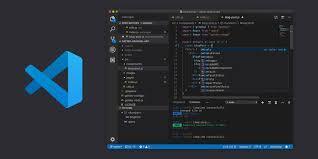How to Read CSV Files in PHP and Count Records Easily
Reading from CSV files is a common task in PHP, especially when handling data imports or managing information efficiently. In this article, we will explore how to read from a CSV file, print its contents, and count the total number of records (lines) in it. Understanding CSV File Handling in PHP CSV (Comma-Separated Values) files are simple text files used to store tabular data. Each line in a CSV file corresponds to a record, and each record consists of fields that are separated by commas. It's crucial to understand how to handle these files in PHP for various data-related tasks. Common Issues When Reading CSV Files When reading a CSV file, you might encounter some challenges. Common issues include: Incorrect file path: Make sure the file path is accessible. Improper formatting: Ensure the CSV's structure is consistent. Handling empty lines: You must account for any empty lines in your file to avoid counting incorrect records. Step-by-Step: Reading a CSV File in PHP In this section, we will modify your existing code to ensure it accurately counts the number of records while effectively handling empty lines. Below is the enhanced PHP code: Code Explanation Opening the CSV file: We use fopen to open the file for reading. Ensure the file path is correct; otherwise, it can lead to failure. Reading the file: We utilize a while loop to read content until we reach the end of the file. The feof function checks for the end-of-file status. Processing each line: Inside the loop, we read a line using fgets. We then check if the line is not empty using trim(), which removes whitespace from the beginning and end of the content. Counting records: For each valid line, we print its content and increment our counter variable $c. Closing the file: Once we finish reading the file, we close it using fclose. Outputting the count: Finally, we output the total number of records. Frequently Asked Questions 1. How do I handle different delimiters in a CSV file? If your CSV file uses a different delimiter (like tabs or semicolons), consider using the fgetcsv function, which allows specifying the delimiter: $row = fgetcsv($fp, 1000, ";"); // For semicolon-delimited CSV 2. Can I process large CSV files using this method? Yes, but for extremely large files, consider reading and processing the file in chunks to reduce memory usage. 3. What if the file does not exist? Always check if the file is opened successfully. You can use if ($fp !== false) before attempting to read from it. By following the steps and code outlined in this blog, you can effectively read a CSV file in PHP, count the number of lines, and print its contents. This method can easily be adapted to include additional data processing as needed.

Reading from CSV files is a common task in PHP, especially when handling data imports or managing information efficiently. In this article, we will explore how to read from a CSV file, print its contents, and count the total number of records (lines) in it.
Understanding CSV File Handling in PHP
CSV (Comma-Separated Values) files are simple text files used to store tabular data. Each line in a CSV file corresponds to a record, and each record consists of fields that are separated by commas. It's crucial to understand how to handle these files in PHP for various data-related tasks.
Common Issues When Reading CSV Files
When reading a CSV file, you might encounter some challenges. Common issues include:
- Incorrect file path: Make sure the file path is accessible.
- Improper formatting: Ensure the CSV's structure is consistent.
- Handling empty lines: You must account for any empty lines in your file to avoid counting incorrect records.
Step-by-Step: Reading a CSV File in PHP
In this section, we will modify your existing code to ensure it accurately counts the number of records while effectively handling empty lines. Below is the enhanced PHP code:
Code Explanation
-
Opening the CSV file: We use
fopento open the file for reading. Ensure the file path is correct; otherwise, it can lead to failure. -
Reading the file: We utilize a
whileloop to read content until we reach the end of the file. Thefeoffunction checks for the end-of-file status. -
Processing each line: Inside the loop, we read a line using
fgets. We then check if the line is not empty usingtrim(), which removes whitespace from the beginning and end of the content. -
Counting records: For each valid line, we print its content and increment our counter variable
$c. -
Closing the file: Once we finish reading the file, we close it using
fclose. - Outputting the count: Finally, we output the total number of records.
Frequently Asked Questions
1. How do I handle different delimiters in a CSV file?
If your CSV file uses a different delimiter (like tabs or semicolons), consider using the fgetcsv function, which allows specifying the delimiter:
$row = fgetcsv($fp, 1000, ";"); // For semicolon-delimited CSV
2. Can I process large CSV files using this method?
Yes, but for extremely large files, consider reading and processing the file in chunks to reduce memory usage.
3. What if the file does not exist?
Always check if the file is opened successfully. You can use if ($fp !== false) before attempting to read from it.
By following the steps and code outlined in this blog, you can effectively read a CSV file in PHP, count the number of lines, and print its contents. This method can easily be adapted to include additional data processing as needed.




























![Gurman: First Foldable iPhone 'Should Be on the Market by 2027' [Updated]](https://images.macrumors.com/t/7O_4ilWjMpNSXf1pIBM37P_dKgU=/2500x/article-new/2025/03/Foldable-iPhone-2023-Feature-Homescreen.jpg)










































![Apple Shares 'Last Scene' Short Film Shot on iPhone 16 Pro [Video]](https://www.iclarified.com/images/news/97289/97289/97289-640.jpg)
![Apple M4 MacBook Air Hits New All-Time Low of $824 [Deal]](https://www.iclarified.com/images/news/97288/97288/97288-640.jpg)
![An Apple Product Renaissance Is on the Way [Gurman]](https://www.iclarified.com/images/news/97286/97286/97286-640.jpg)
![Apple to Sync Captive Wi-Fi Logins Across iPhone, iPad, and Mac [Report]](https://www.iclarified.com/images/news/97284/97284/97284-640.jpg)













![What Google Messages features are rolling out [May 2025]](https://i0.wp.com/9to5google.com/wp-content/uploads/sites/4/2023/12/google-messages-name-cover.png?resize=1200%2C628&quality=82&strip=all&ssl=1)
![[Fixed] Gemini 2.5 Flash missing file upload for free app users](https://i0.wp.com/9to5google.com/wp-content/uploads/sites/4/2025/03/google-gemini-workspace-1.jpg?resize=1200%2C628&quality=82&strip=all&ssl=1)























































































































































































































































































































































































![Ditching a Microsoft Job to Enter Startup Purgatory with Lonewolf Engineer Sam Crombie [Podcast #171]](https://cdn.hashnode.com/res/hashnode/image/upload/v1746753508177/0cd57f66-fdb0-4972-b285-1443a7db39fc.png?#)





![[DEALS] Internxt Cloud Storage Lifetime Subscription: 10TB Plan (88% off) & Other Deals Up To 98% Off – Offers End Soon!](https://www.javacodegeeks.com/wp-content/uploads/2012/12/jcg-logo.jpg)




















-Tony-Hawk's™-Pro-Skater™-3-+-4-Reveal-Trailer-00-00-27.png?width=1920&height=1920&fit=bounds&quality=70&format=jpg&auto=webp#)

.png?width=1920&height=1920&fit=bounds&quality=70&format=jpg&auto=webp#)



































































